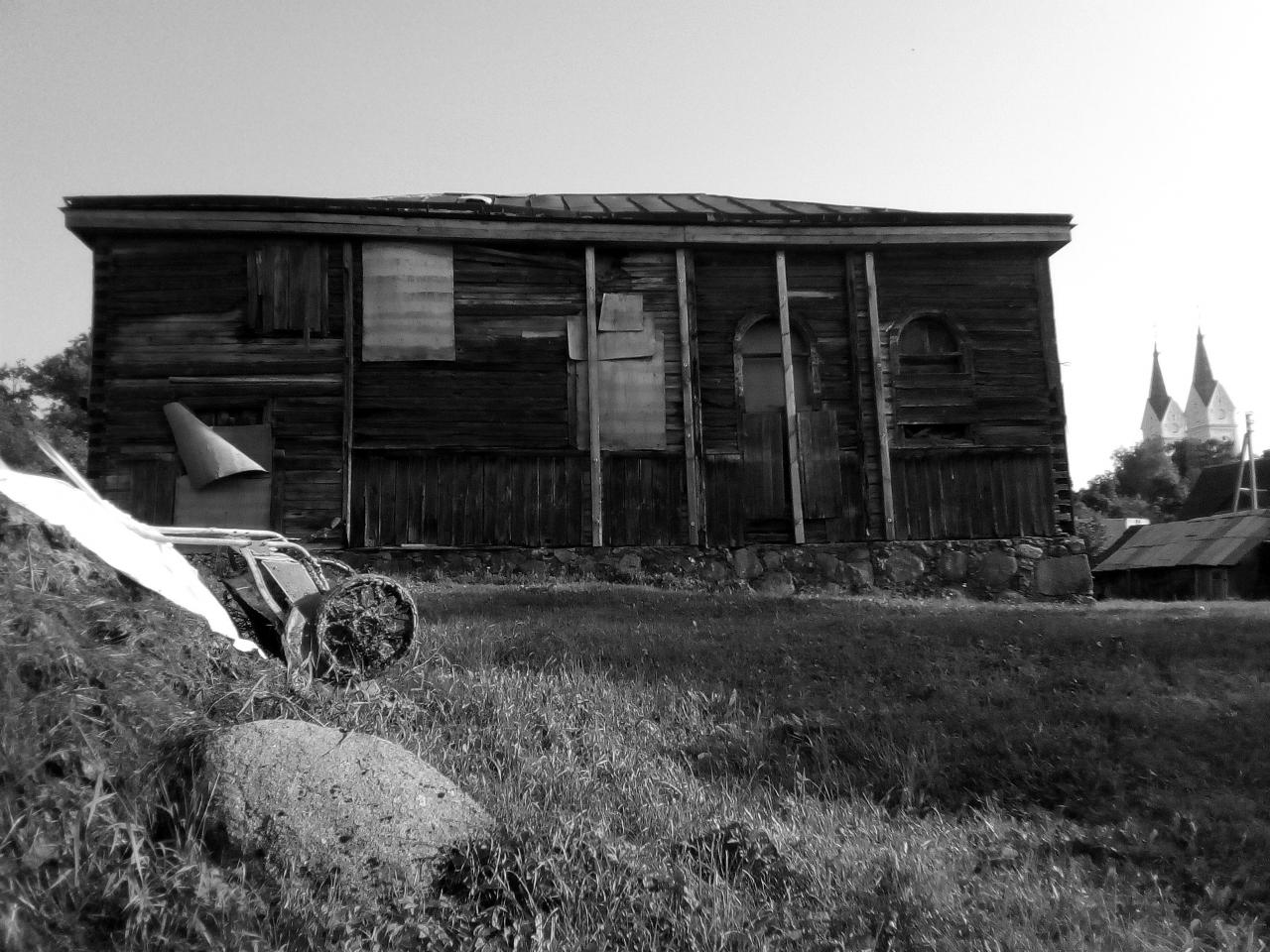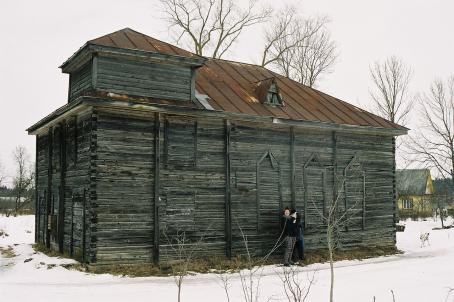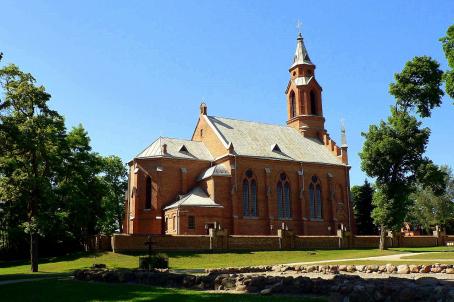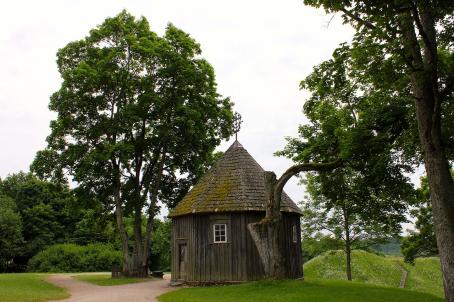Wooden synagogue of Alanta

The wooden synagogue of Alanta, built between 1870 and 1900, is one of the few remaining wooden synagogues in Lithuania. Abandoned with the Second World War, it is now used as a storage facility.

The wooden synagogue of Alanta, built between 1870 and 1900, is one of the few remaining wooden synagogues in Lithuania. Abandoned with the Second World War, it is now used as a storage facility.

The Kurkliai Wooden Synagogue was built in 1936 in a style that combines a traditional synagogue layout with expressionist elements. A storage place since the Second World War, the synagogue was completely abandoned in the 1990s.

The Church of the Holy Virgin Mary was first built at the beginning of the 15th century as a wooden church. The present stone church was built in 1910-1920 in the neo-gothic style and consecrated in 1925. Between 1930-1934 and 1968-1979, Nikodemas Švogžlys-Milžinas (1899-1985), a public figure, writer, repaired the church.

The wooden chapel Kernavė, which is next to the Church of the Holy Virgin Mary, was built in 1820-1822. The chapel was transferred to the care of the church, and was for a long time used only for storing church furniture. Unattended, the chapel gradually deteriorated and finally collapsed after the Second World War. In 1959, the building was renovated and repaired externally with vertical boards.